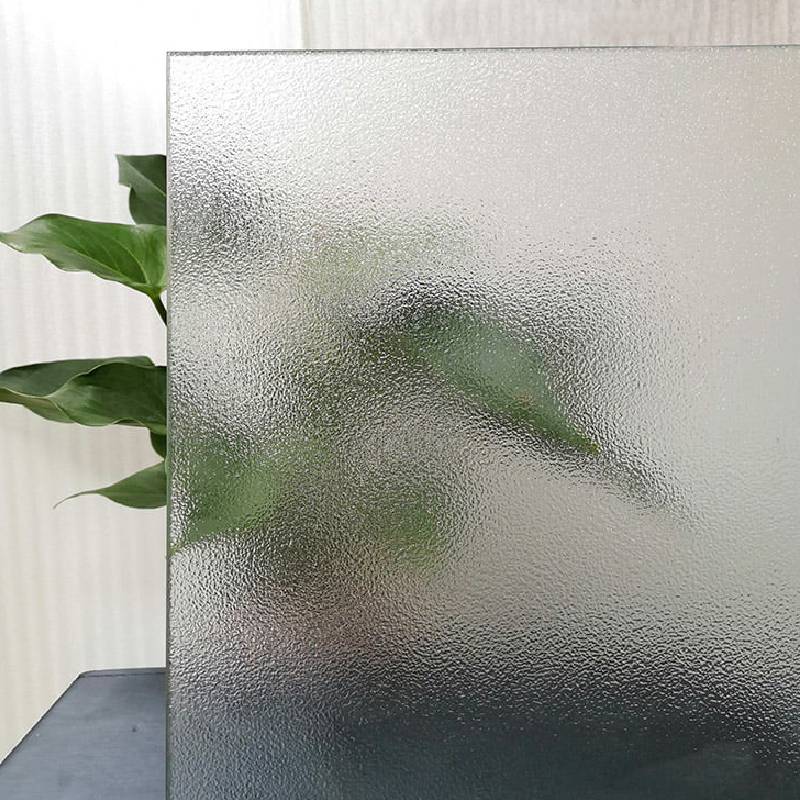The process of making sheet glass, commonly known asThe process of making sheet glass, commonly known as is a marvel of modern manufacturing the glass industry due to its ability to produce high-quality glass sheets with exceptional smoothness and uniform thickness.
In this process, molten glass is poured onto a bed of molten tin. The glass floats on top of the tin, which is at a temperature just below the freezing point of glass. This unique setup allows the glass to spread out evenly under the influence of gravity and surface tension, resulting in a consistent thickness without the need for rolling or pressing.
As the glass moves along the tin bath, it begins to cool and solidify from the top down and from the edges inward. The slow cooling process ensures that the glass does not warp or crack, maintaining its flatness and optical quality. Once the glass reaches the annealing lehr, an oven designed to cool the glass slowly and uniformly, it undergoes a controlled cooling process that relieves internal stresses and strengthens the material.
One of the key advantages of the float glass process is its versatility; it can produce glass sheets of various sizes and thicknesses by adjusting the speed at which the glass travels over the tin bath and the temperature profile of the annealing lehr. This flexibility has made float glass the preferred choice for a wide range of applications, from architectural windows and doors to automotive windshields and photovoltaic panels This flexibility has made float glass the preferred choice for a wide range of applications, from architectural windows and doors to automotive windshields and photovoltaic panels

This flexibility has made float glass the preferred choice for a wide range of applications, from architectural windows and doors to automotive windshields and photovoltaic panels This flexibility has made float glass the preferred choice for a wide range of applications, from architectural windows and doors to automotive windshields and photovoltaic panels
 sheet glass process
sheet glass process.
Environmental considerations are also integral to the float glass process. Manufacturers continually strive to reduce energy consumption and minimize waste by recycling broken glass, or cullet, back into the melting process. Additionally, advancements in technology have allowed for the optimization of tin usage and the reduction of emissions, making the production of sheet glass more sustainable.
In conclusion, the float glass process is a testament to human innovation and engineering prowess. Its ability to produce large, flawless sheets of glass efficiently and with minimal environmental impact has made it an indispensable part of our modern infrastructure. As technology continues to evolve, it will be exciting to see how this process further improves to meet the growing demands for high-quality glass in various sectors.
 Afrikaans
Afrikaans  Albanian
Albanian  Amharic
Amharic  Arabic
Arabic  Armenian
Armenian  Azerbaijani
Azerbaijani  Basque
Basque  Belarusian
Belarusian  Bengali
Bengali  Bosnian
Bosnian  Bulgarian
Bulgarian  Catalan
Catalan  Cebuano
Cebuano  Corsican
Corsican  Croatian
Croatian  Czech
Czech  Danish
Danish  Dutch
Dutch  English
English  Esperanto
Esperanto  Estonian
Estonian  Finnish
Finnish  French
French  Frisian
Frisian  Galician
Galician  Georgian
Georgian  German
German  Greek
Greek  Gujarati
Gujarati  Haitian Creole
Haitian Creole  hausa
hausa  hawaiian
hawaiian  Hebrew
Hebrew  Hindi
Hindi  Miao
Miao  Hungarian
Hungarian  Icelandic
Icelandic  igbo
igbo  Indonesian
Indonesian  irish
irish  Italian
Italian  Japanese
Japanese  Javanese
Javanese  Kannada
Kannada  kazakh
kazakh  Khmer
Khmer  Rwandese
Rwandese  Korean
Korean  Kurdish
Kurdish  Kyrgyz
Kyrgyz  Lao
Lao  Latin
Latin  Latvian
Latvian  Lithuanian
Lithuanian  Luxembourgish
Luxembourgish  Macedonian
Macedonian  Malgashi
Malgashi  Malay
Malay  Malayalam
Malayalam  Maltese
Maltese  Maori
Maori  Marathi
Marathi  Mongolian
Mongolian  Myanmar
Myanmar  Nepali
Nepali  Norwegian
Norwegian  Norwegian
Norwegian  Occitan
Occitan  Pashto
Pashto  Persian
Persian  Polish
Polish  Portuguese
Portuguese  Punjabi
Punjabi  Romanian
Romanian  Russian
Russian  Samoan
Samoan  Scottish Gaelic
Scottish Gaelic  Serbian
Serbian  Sesotho
Sesotho  Shona
Shona  Sindhi
Sindhi  Sinhala
Sinhala  Slovak
Slovak  Slovenian
Slovenian  Somali
Somali  Spanish
Spanish  Sundanese
Sundanese  Swahili
Swahili  Swedish
Swedish  Tagalog
Tagalog  Tajik
Tajik  Tamil
Tamil  Tatar
Tatar  Telugu
Telugu  Thai
Thai  Turkish
Turkish  Turkmen
Turkmen  Ukrainian
Ukrainian  Urdu
Urdu  Uighur
Uighur  Uzbek
Uzbek  Vietnamese
Vietnamese  Welsh
Welsh  Bantu
Bantu  Yiddish
Yiddish  Yoruba
Yoruba  Zulu
Zulu 

 This flexibility has made float glass the preferred choice for a wide range of applications, from architectural windows and doors to automotive windshields and photovoltaic panels This flexibility has made float glass the preferred choice for a wide range of applications, from architectural windows and doors to automotive windshields and photovoltaic panels
This flexibility has made float glass the preferred choice for a wide range of applications, from architectural windows and doors to automotive windshields and photovoltaic panels This flexibility has made float glass the preferred choice for a wide range of applications, from architectural windows and doors to automotive windshields and photovoltaic panels